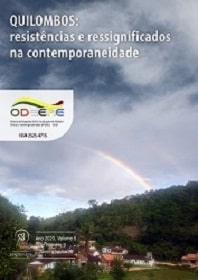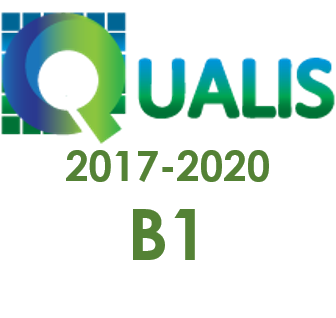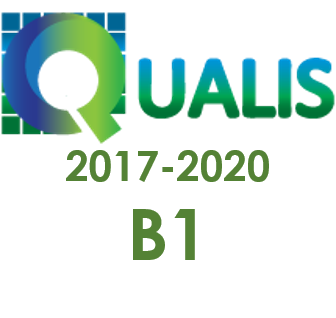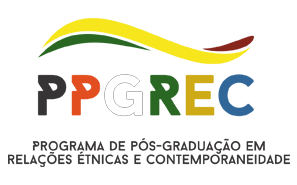FIGHT AND AESTHETICS IN REVOLT: the left and the self-managed commune of Lima
DOI:
https://doi.org/10.22481/odeere.v5i9.6592Keywords:
autogestión, estética política, lucha de clases, revuelta, Sendero Luminoso.Abstract
In the middle of sunset the Maoist resistance, we refer to the first years of the nineties, Shaining Pat considered that the control of the city was part of a strategic-military struggle to seize power. This deterministic vision forced to find in the marginal zones like Villa El Salvador the necessary force to carry out the vanguard revolution. However, in the midst of this search an urban commune was erected that came to question the role of the left and transform capitalist society from the State. Therefore, the purpose of this article is to analyze and interpret the breakdown of a form of self-management gestated in the marginal belts of Lima and in the process of popular war. For this, we will establish a bridge of dialogue between the bibliographic data and the testimonial reconstruction of a movement of workers that launched a project of social and political self-regulation.
Keywords: self-management, political aesthetics, class struggle, revolt, Shaining Pat.
Downloads
References
ADRIANZÉN, Alberto. Apogeo y crisis de la izquierda peruana. Hablan sus protagonistas. Lima: IDEA Internacional, Universidad Antonio Ruiz de Montoya, 2011.
BURT, Jo-Marie. Sendero Luminoso y la ‘batalla decisiva’ en las barriadas de Lima: el caso de Villa El Salvador. En: STERN, S (Edit). Los senderos insólitos del Perú. Guerra y sociedad, 1980-1995. Lima: IEP, UNSCH. 1999. pp. 263-300.
BURT, Jo-Marie. Violencia y autoritarismo en el Perú: bajo la sombra de Sendero y la dictadura de Fujimori. Lima: Asociación SER- Equipo Peruano de Antropología Forense, 2011.
CORONEL, José. Violencia política y respuestas campesinas en Huanta. En: DEGREGORI, C; CORONEL, P; DEL PINO, P. (eds) Las rondas campesinas y la derrota. Perú: IEP-UNSCH. 1996. pp. 26-116.
CUARTA CONVENCIÓN CUAVES. Comisión Organizadora de la 4ta. Convención, 20 de enero. Villa El Salvador: CUAVES, 1982.
DEGREGORI, Carlos; GROMPONE, Romero. Elecciones1990. Demonios y redentores en el nuevo Perú. Una tragedia en dos vueltas. Lima: Instituto de Estudios Peruanos,1991.
ESCARZAGA, Fabiola. Los frentes heterodoxos de Sendero Luminoso. Estudios Latinoamericanos. https://doi.org/10.22201/cela.24484946e.1997.7.51441 Acceso en: 4/03/2018.
ESCÁRZAGA, Fabiola. Auge y caída de Sendero Luminoso. Bajo el Volcán. Revista del Posgrado en Sociología de la Benemérita Universidad Autónoma de Puebla, 2, 2001, pp. 75-97.
GUZMÁN, Abimael. Guerra popular en el Perú. El pensamiento Gonzalo. L. Arce ed. México, 1991.
MANRIQUE, Nelson (2007). Pensamiento, acción y base política del movimiento Sendero Luminoso. La guerra y las primeras respuestas de los comuneros (1964-1983). Historizar el pasado vivo en América Latina. Disponible en: http://www.historizarelpasadovivo.cl/downloads/manrique.pdf. Acceso en: 20/01/2018.
MCEVOY, Gabriela (2008). “La construcción de la imagen heroica a través del discurso periodístico. El caso de la activista peruana María Elena Moyano”. Historia Crítica. Revista de la Universidad de Los Andes, 35, 2008, pp. 82-104. https://doi.org/10.7440/histcrit35.2008.06
MOVIMIENTO REVOLUCIONARIO SOCIALISTA. Qué es y qué no es el socialismo. En: Socialización del poder político y organización política de las masas. Lima: Ediciones Sociedad y Política 1, 1980a.
MOVIMIENTO REVOLUCIONARIO SOCIALISTA. Sociedad y política, 1° de Marzo. Lima: Editorial Colmena, 1980b.
PARTIDO UNIFICADO MARIATEGUISTA. saludo a la Asamblea Nacional Popular. Comisión Nacional Femenina, 19 de Noviembre, 1987.
ROLDAN, Julio Gonzalo el mito. Lima: Tierra Adentro, 1990.
TAPIA, Carlos. Las fuerzas armadas y Sendero Luminoso. Dos estrategias y un final, Lima, IEP, 1997.
VILLA EL SALVADOR. Villa El Salvador: Avances hacia la unidad 29 de Mayo. Lima: Villa El Salvador, 1979.
WACQUANT, Loic. Los condenados de la ciudad. Gueto, periferia y Estado. Argentina: Siglo XXI, 2007.
SALAZAR, Augusto. Lima la horrible. Concepción: Editorial Universidad de concepción, 2002.
Downloads
Published
How to Cite
Issue
Section
License
Copyright (c) 2020 ODEERE

This work is licensed under a Creative Commons Attribution 4.0 International License.
You are free to:
Share - copy and redistribute the material in any medium or format; Adapt - remix, transform, and build from the material for any purpose, even commercially. This license is acceptable for Free Cultural Works. The licensor cannot revoke these freedoms as long as you follow the terms of the license.
Under the following terms:
Attribution - You must appropriately give credit, provide a link to the license, and indicate if any changes have been made. You may do so in any reasonable way, but not in a way that suggests that you or your use is endorsed by the licensor.
There are no additional restrictions - You cannot apply legal terms or technological measures that legally restrict others to make any use permitted by the license.















